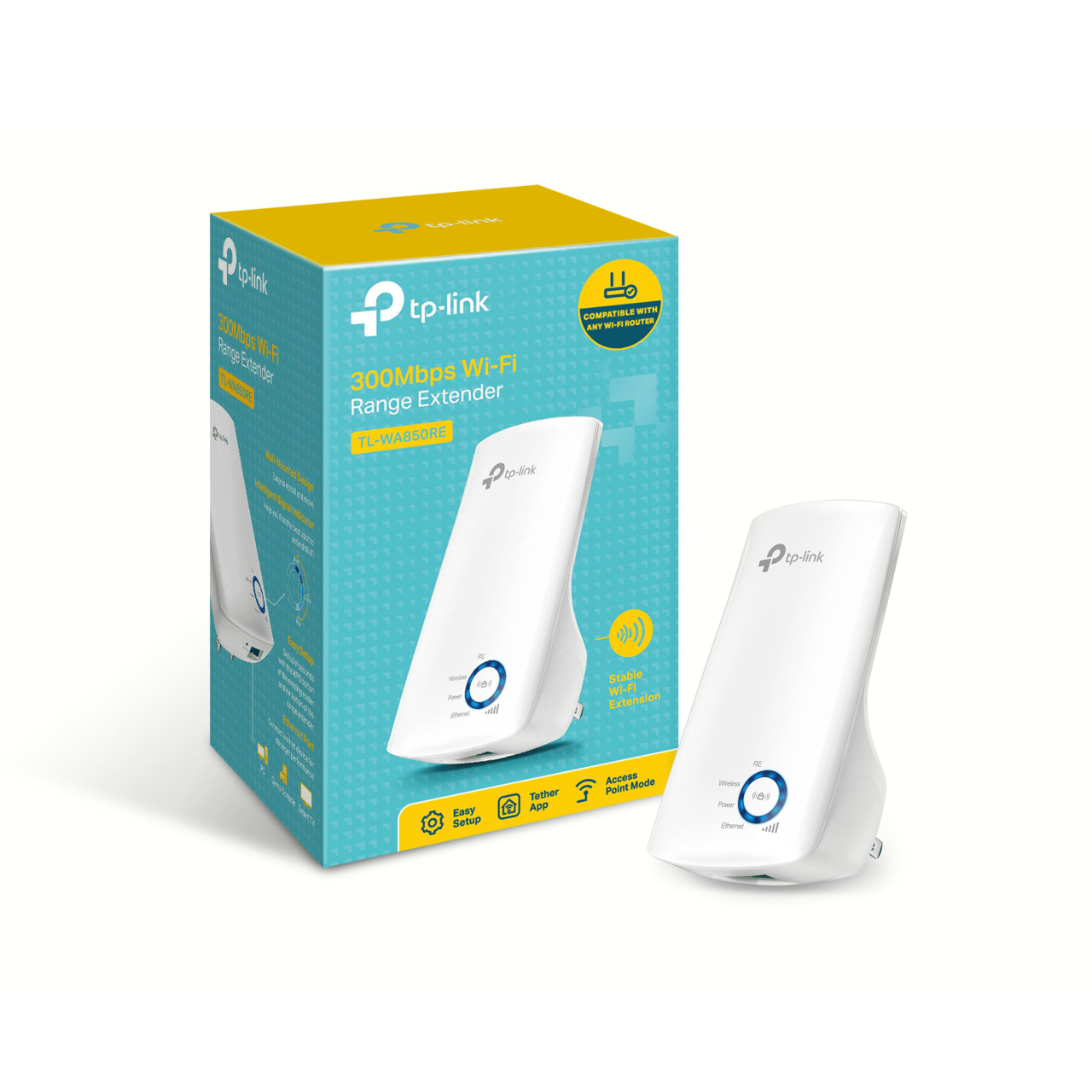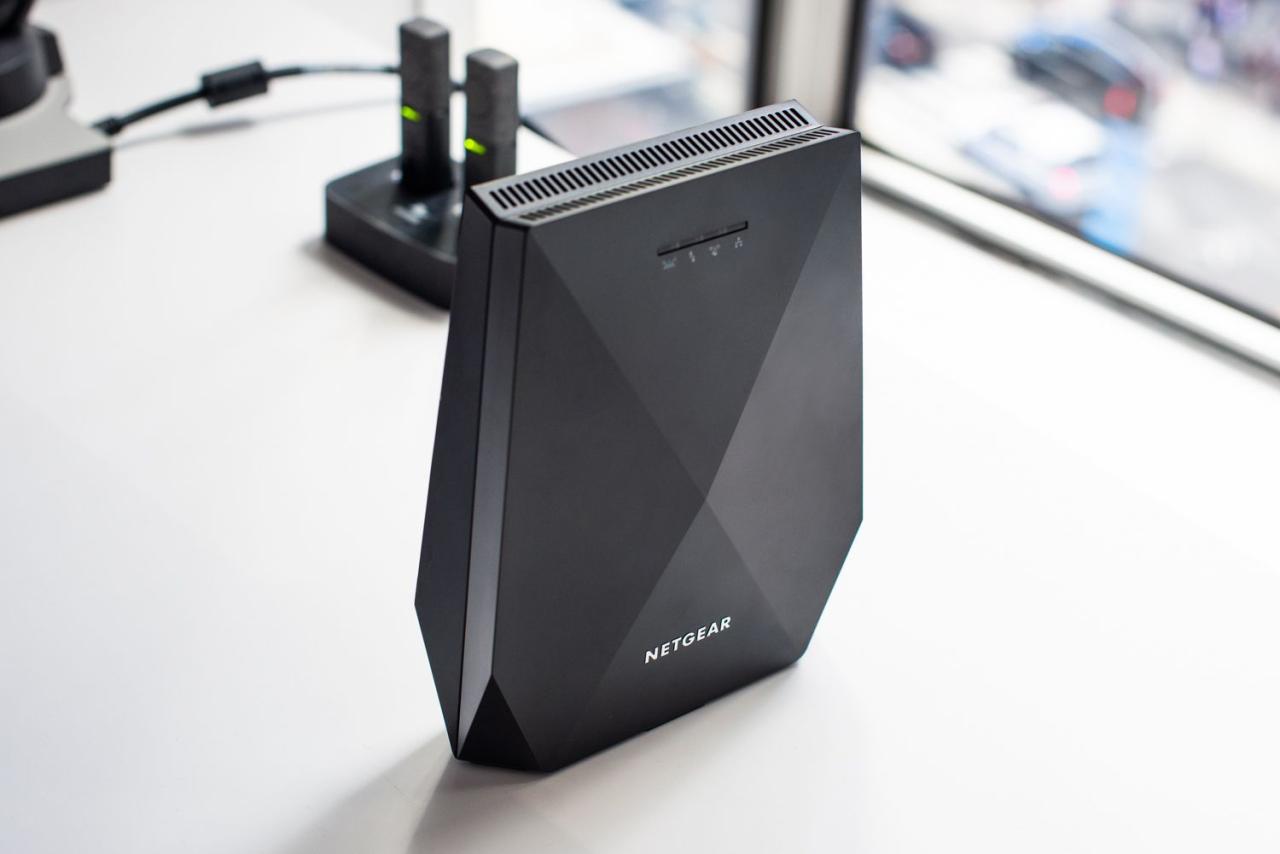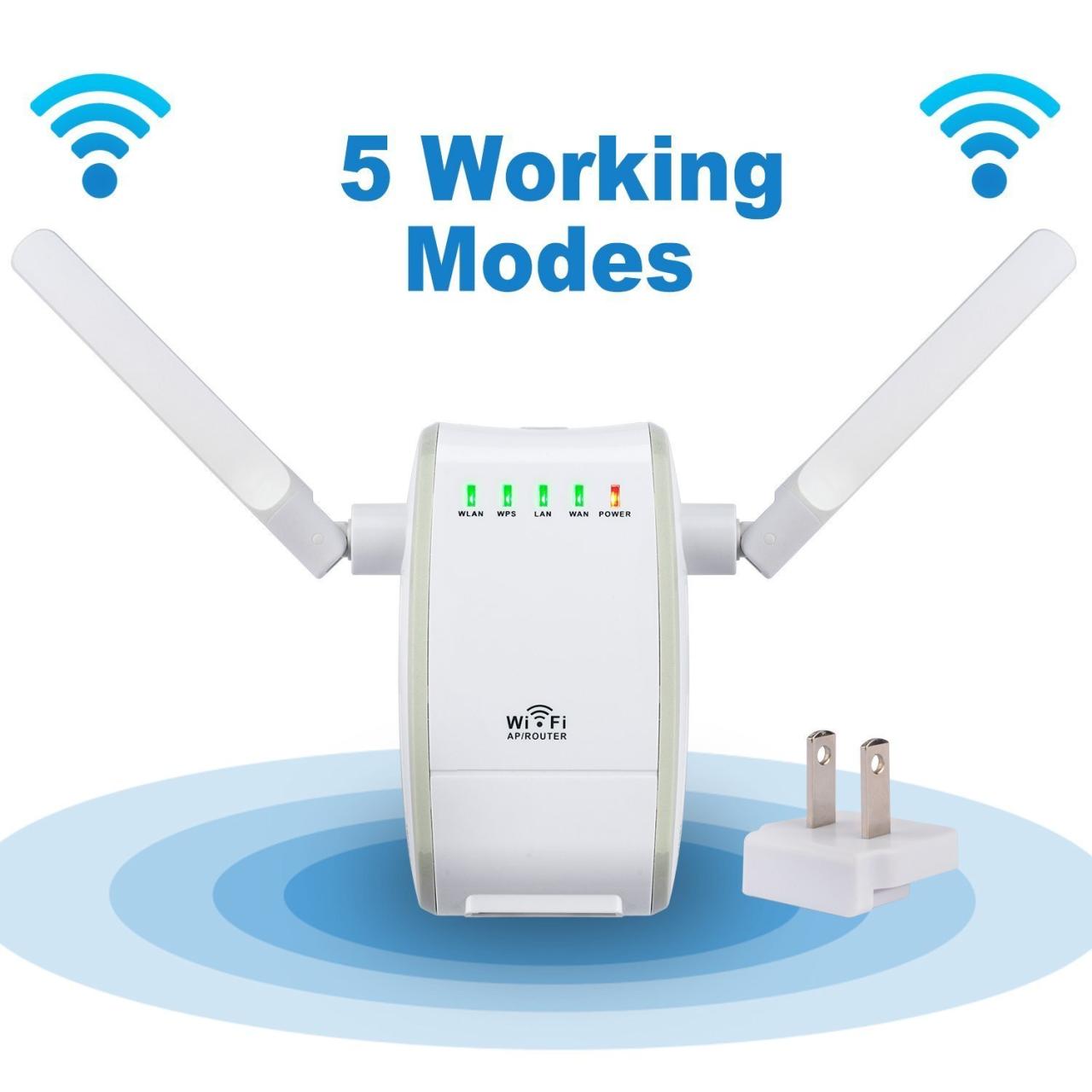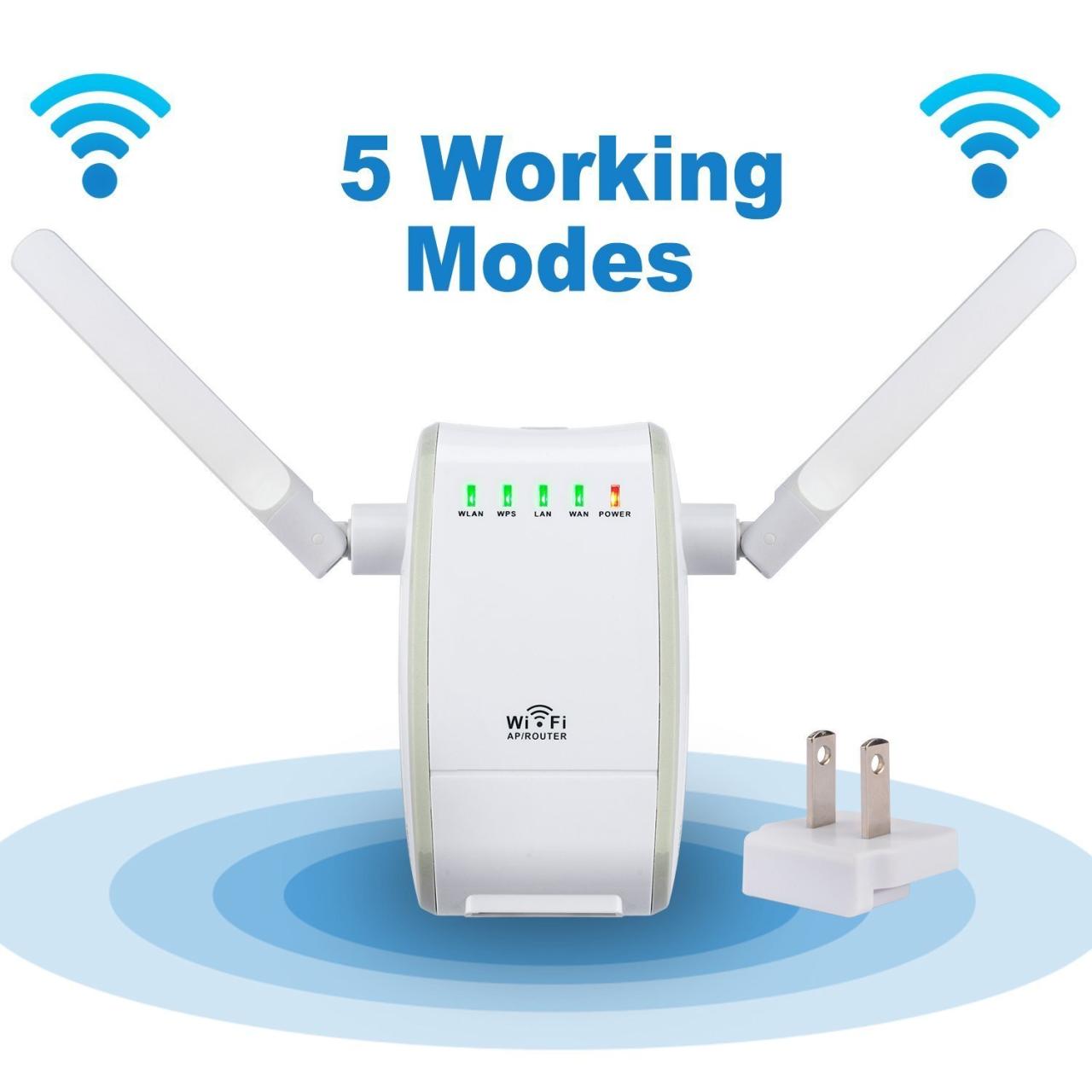Amplificateur Wifi, or Wi-Fi extender in English, is your key to conquering those frustrating dead zones in your home or office. Imagine seamless streaming, lag-free gaming, and reliable internet access in every corner. This guide will walk you through everything you need to know about choosing, installing, and optimizing your Wi-Fi amplifier for peak performance.
We’ll cover the different types of amplifiers available, from simple range extenders to sophisticated mesh networks, helping you choose the perfect solution for your needs. We’ll also explore the technical aspects, such as frequency bands (2.4 GHz vs. 5 GHz) and the impact of physical obstacles on signal strength. Get ready to transform your Wi-Fi experience!
Understanding Wifi Amplifiers
A Wifi amplifier, also known as a Wifi extender or range extender, boosts your existing Wifi signal to reach areas where it’s weak or nonexistent. This improves connectivity and allows you to enjoy reliable internet access throughout your home or office. Let’s delve into the various aspects of Wifi amplifiers.
Types of Wifi Amplifiers
The market offers several types of Wifi amplifiers, each with its own strengths and weaknesses. These include:
- Traditional Wifi Extenders: These are the most common type, typically plugged into a wall socket and extending the signal from your existing router. They operate on either the 2.4 GHz or 5 GHz band, or both.
- Powerline Adapters: These use your home’s electrical wiring to transmit the Wifi signal, offering a wired alternative for extending range, particularly useful in areas with poor Wifi penetration.
- Mesh Wifi Systems: These consist of multiple nodes that work together to create a seamless Wifi network across your home. While technically different from traditional extenders, they achieve similar results.
- Wifi Repeaters: These receive a Wifi signal and retransmit it, essentially repeating the signal. They can be simpler and less expensive than other types, but they also tend to halve the speed of the original signal.
Technical Specifications to Consider
Before purchasing a Wifi amplifier, consider these crucial technical aspects:
- Wifi Standards: Look for support for the latest Wifi standards (e.g., Wi-Fi 6 or Wi-Fi 6E) for better speed and performance.
- Frequency Bands: Check for support for both 2.4 GHz (better range, slower speeds) and 5 GHz (shorter range, faster speeds) bands for optimal flexibility.
- Data Transfer Rate: This indicates the maximum speed the amplifier can achieve. Higher is better.
- Security Protocols: Ensure support for WPA2/WPA3 encryption for robust security.
- Number of Antennas: More antennas generally mean better signal coverage and strength.
Wifi Amplifier Installation Methods

Installation varies depending on the amplifier type. Traditional extenders usually involve plugging them into a wall socket and connecting them to your existing Wifi network through a simple setup process, often guided by a mobile app. Powerline adapters require plugging them into wall sockets at both the router and the desired location. Mesh systems typically involve installing multiple nodes, often with a centralized app for managing the network.
Mesh Wifi vs. Traditional Wifi Amplifiers
Mesh Wifi systems offer a more sophisticated and seamless approach to Wifi coverage. They create a single network name (SSID) across all nodes, allowing devices to seamlessly switch between nodes as they move around the house. Traditional amplifiers often create separate networks, requiring manual switching between networks. Mesh systems are generally more expensive but offer superior performance and ease of use.
Performance and Functionality
Optimizing your Wifi amplifier’s performance involves strategic placement and troubleshooting common issues. Understanding the impact of physical obstacles and frequency bands is also crucial.
Optimizing Wifi Amplifier Placement
Follow these steps for optimal placement:
- Find a central location: Position the amplifier roughly midway between your router and the area with weak signal.
- Avoid obstacles: Keep the amplifier away from walls, large furniture, and electronic devices that can interfere with the signal.
- Check signal strength: Use your device’s Wifi signal indicator or a Wifi analyzer app to check the signal strength at different locations.
- Experiment with placement: Try different locations to find the spot that provides the best coverage.
- Use an Ethernet connection (if possible): For optimal performance, connect the amplifier to your router using an Ethernet cable if possible, avoiding relying solely on the Wifi signal.
Troubleshooting Common Wifi Amplifier Problems
Common issues include slow speeds, dropped connections, and dead zones. Troubleshooting steps involve checking the amplifier’s placement, restarting the amplifier and router, updating the firmware, and verifying the correct Wifi channel settings.
Impact of Physical Obstacles
Walls, furniture, and other physical obstacles significantly attenuate Wifi signals. Materials like concrete and metal are particularly problematic. Strategic placement to minimize obstacles is key to maximizing performance.
2.4 GHz vs. 5 GHz Performance
The 2.4 GHz band offers better range but slower speeds, while the 5 GHz band provides faster speeds but with a shorter range. A dual-band amplifier supports both, allowing you to choose the optimal band based on your needs and location.
Features and Benefits
Wifi amplifiers offer numerous benefits for homes and offices. Let’s explore some key features and advantages.
Comparison of Wifi Amplifier Brands
| Brand | Feature 1 (e.g., Speed) | Feature 2 (e.g., Range) | Feature 3 (e.g., Security) |
|---|---|---|---|
| TP-Link | Up to 1300 Mbps | Large coverage area | WPA2/WPA3 encryption |
| Netgear | Up to 1750 Mbps | Multiple antennas | Advanced security features |
| D-Link | Up to 1200 Mbps | Beamforming technology | Guest network access |
Key Benefits of Using a Wifi Amplifier
Benefits include extended Wifi coverage, improved internet speed in previously weak areas, increased reliability, and the ability to support more devices without performance degradation.
So, you’re looking at getting a wifi extender, an amplificateur wifi, to boost your signal? Makes sense! Reliable internet is crucial, even if you’re just checking the news, like updates on the recent drone attack russia. A strong wifi signal means you can easily access those reports and other important information. Getting a good amplificateur wifi is a smart move for keeping connected, whatever’s happening in the world.
Improving Internet Speed and Reliability
By extending the range and strengthening the signal, Wifi amplifiers reduce dropped connections, buffering issues, and slow download/upload speeds. This translates to a smoother and more reliable internet experience.
Wifi Amplifier in a Large Building

In a large building like an office or warehouse, a single router might not provide sufficient coverage. A system of Wifi amplifiers, strategically placed, can ensure consistent and strong Wifi throughout the building, supporting numerous users and devices.
Cost and Value
The price of Wifi amplifiers varies depending on several factors, influencing the overall cost and return on investment.
Factors Influencing Wifi Amplifier Price
- Wifi standards (e.g., Wi-Fi 6 vs. older standards)
- Frequency bands (single-band vs. dual-band)
- Data transfer rate (higher speeds cost more)
- Number of antennas (more antennas = better coverage, higher price)
- Additional features (e.g., guest network, advanced security)
- Brand reputation
Long-Term Cost Savings
Compared to upgrading to a more powerful router or installing entirely new cabling, a Wifi amplifier often offers a more cost-effective solution for extending Wifi coverage. The initial investment is typically lower, resulting in long-term savings.
Price Ranges and Features
Budget-friendly amplifiers (under $30) may offer basic features and limited performance. Mid-range amplifiers ($30-$80) provide better speeds and range. High-end amplifiers (over $80) offer advanced features, higher speeds, and wider coverage.
Return on Investment (ROI)
The ROI of a Wifi amplifier is high if it solves connectivity issues, improves productivity, and eliminates the need for more expensive solutions. The cost savings and improved performance can quickly outweigh the initial investment.
Security Considerations
Security is paramount when using a Wifi amplifier. Proper configuration and regular maintenance are essential to prevent unauthorized access and data breaches.
Security Protocols
Modern Wifi amplifiers typically use WPA2/WPA3 encryption protocols to secure the network. These protocols encrypt data transmitted between devices and the amplifier, protecting sensitive information.
Firmware Updates
Regularly updating the amplifier’s firmware is crucial for patching security vulnerabilities and improving performance. Manufacturers release updates to address known issues and enhance security.
Securing a Wifi Amplifier Network
- Change the default password: Choose a strong, unique password for both the amplifier’s admin interface and the Wifi network itself.
- Enable WPA2/WPA3 encryption: This is essential for protecting your data from unauthorized access.
- Disable WPS (Wi-Fi Protected Setup): WPS can be a security vulnerability if not properly configured.
- Use a strong password: Avoid easily guessable passwords.
- Regularly update the firmware: Check for updates and install them promptly.
Potential Security Risks and Mitigation, Amplificateur wifi
Potential risks include unauthorized access to the network, data interception, and malware infection. Mitigation involves using strong passwords, enabling encryption, regularly updating firmware, and using a firewall.
Visual Representation of Signal Strength: Amplificateur Wifi

Imagine a house represented on a map. Areas with strong Wifi signal are depicted in vibrant green, indicating excellent connectivity. Areas with weak signal are shown in yellow or orange, signifying potential connectivity issues. Dead zones, where the signal is nonexistent, are represented in dark gray or red.
Illustrating Wifi Amplifier Signal Enhancement
Before amplifier placement, the map shows significant yellow and red zones. After installing the amplifier, the map shows a substantial expansion of the green zone, extending the coverage area. The yellow and orange zones shrink significantly, and the red zones are either eliminated or substantially reduced. The colors would transition smoothly from green (strong) to yellow/orange (weak) to red (dead) to clearly visualize the signal strength gradient.
The amplifier’s effect is illustrated by a broader green area emanating from its location, clearly showing the signal enhancement and increased coverage.
Concluding Remarks
From understanding the various types of Wi-Fi amplifiers and their technical specifications to optimizing placement and troubleshooting common issues, this guide provides a comprehensive overview of how to boost your Wi-Fi signal. By carefully considering factors like frequency bands, physical obstacles, and security protocols, you can achieve a reliable and high-performing network throughout your home or office. So, ditch the dead zones and embrace a stronger, more reliable Wi-Fi connection!
So you’re thinking about getting a wifi amplifier, or “amplificateur wifi”? Awesome! But before you boost your signal, it’s super helpful to know what frequency you’re currently using. To figure that out on your iPhone, check out this guide on how to check your wifi ghz on iphone. Knowing your GHz will help you choose the right amplifier and get the best performance.
Once you know your frequency, you can find the perfect amplificateur wifi to extend your coverage.
Popular Questions
What’s the difference between a Wi-Fi extender and a mesh Wi-Fi system?
A Wi-Fi extender simply repeats the signal from your router, while a mesh system uses multiple nodes to create a more robust and seamless network.
So you’re looking at getting a wifi amplifier? A stronger signal can be a lifesaver, especially in areas with spotty coverage. Think about how helpful that would be on a BC Ferries trip; check out the current status of their wifi here: bc ferries wifi. Getting a good signal on the water is tricky, but a decent amplifier can make a huge difference, even beyond ferry travel.
How far can a Wi-Fi amplifier extend my signal?
The range depends on the amplifier’s power and the environment. Expect a range increase of several rooms, but obstacles like walls and furniture will significantly impact range.
Do I need to configure my Wi-Fi amplifier?
Most amplifiers require some setup, usually involving connecting them to your existing Wi-Fi network. Instructions vary by model.
Will a Wi-Fi amplifier slow down my internet speed?
It can, but a good quality amplifier with a strong signal should minimize speed reduction. Poorly placed amplifiers can cause more issues.
